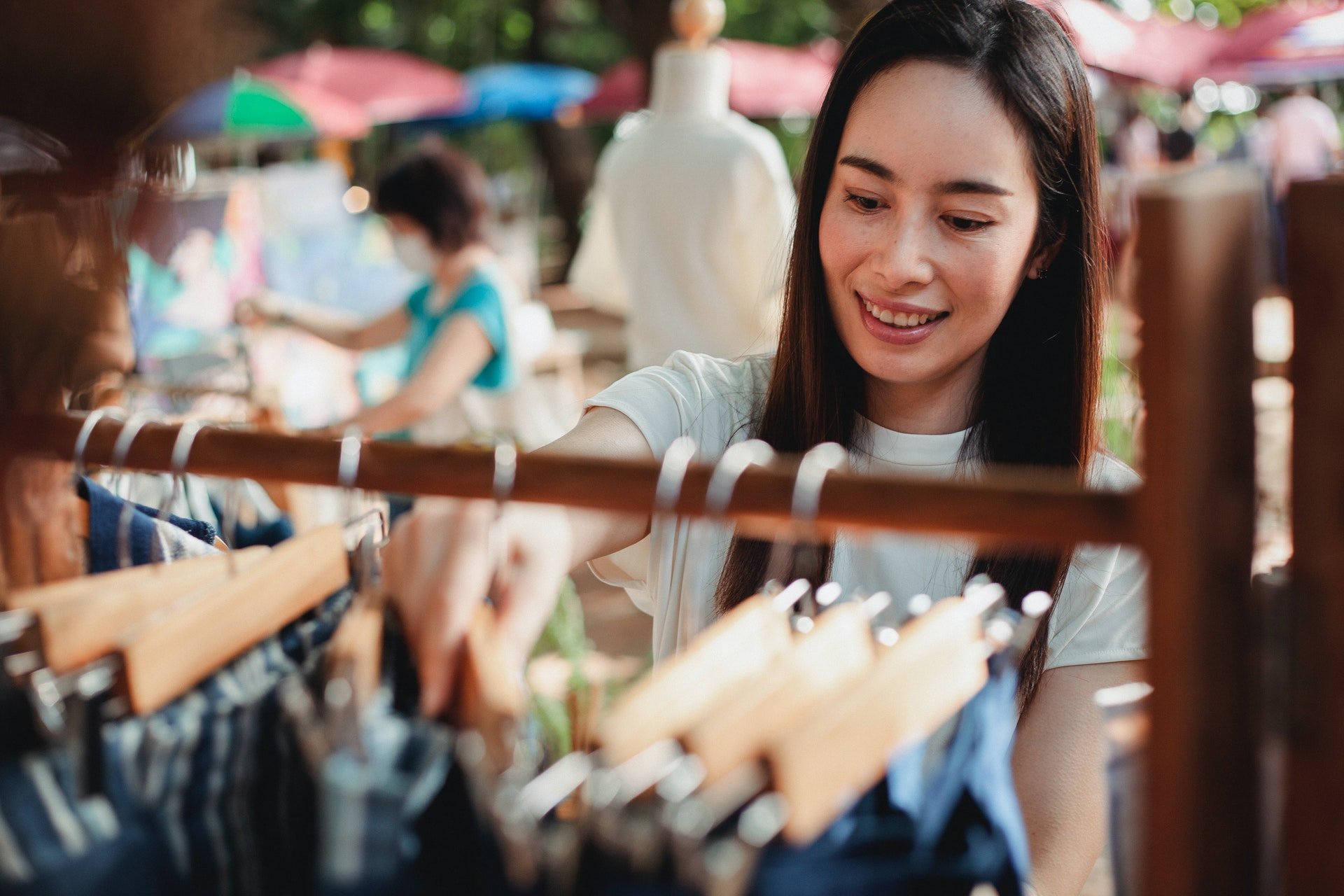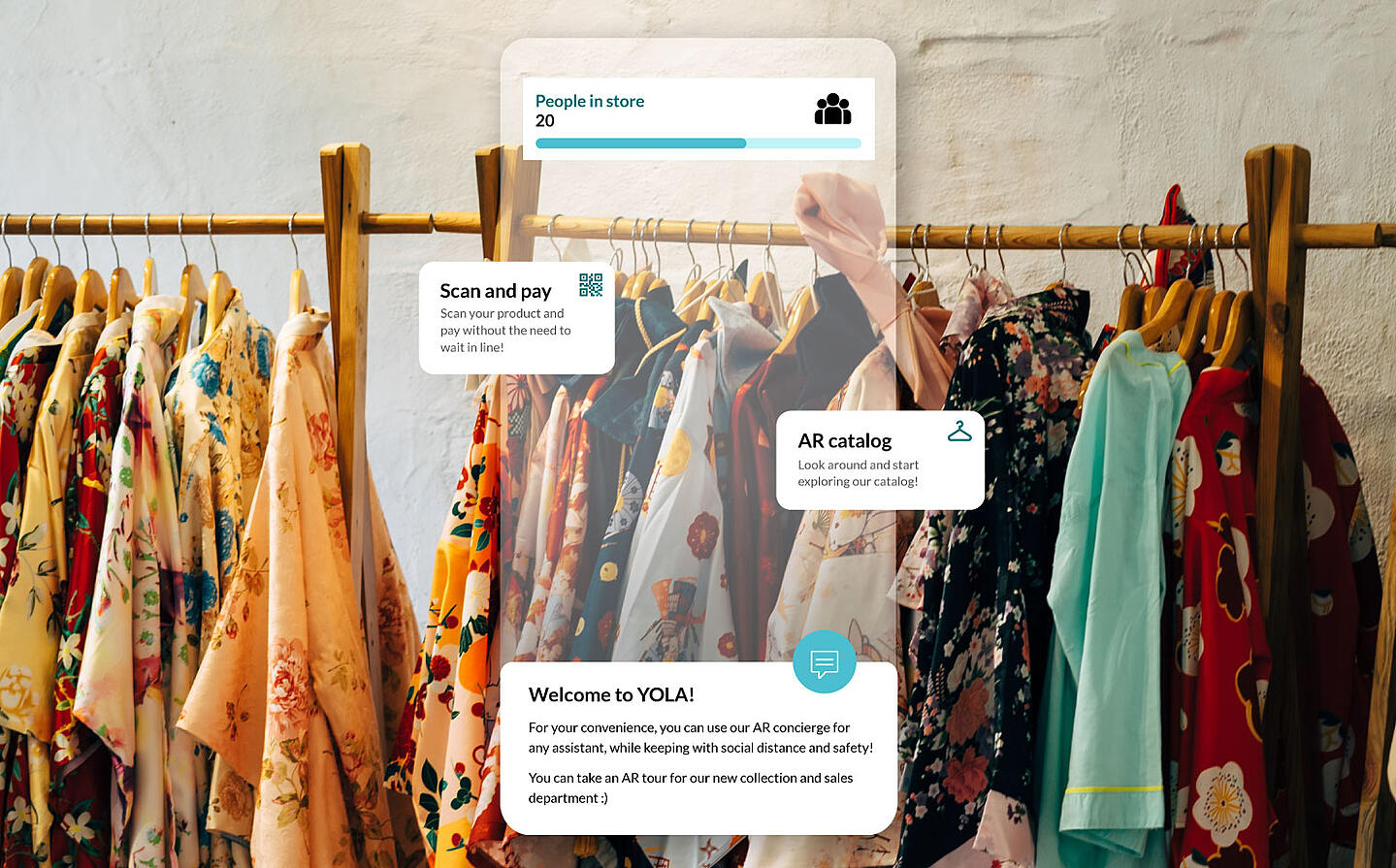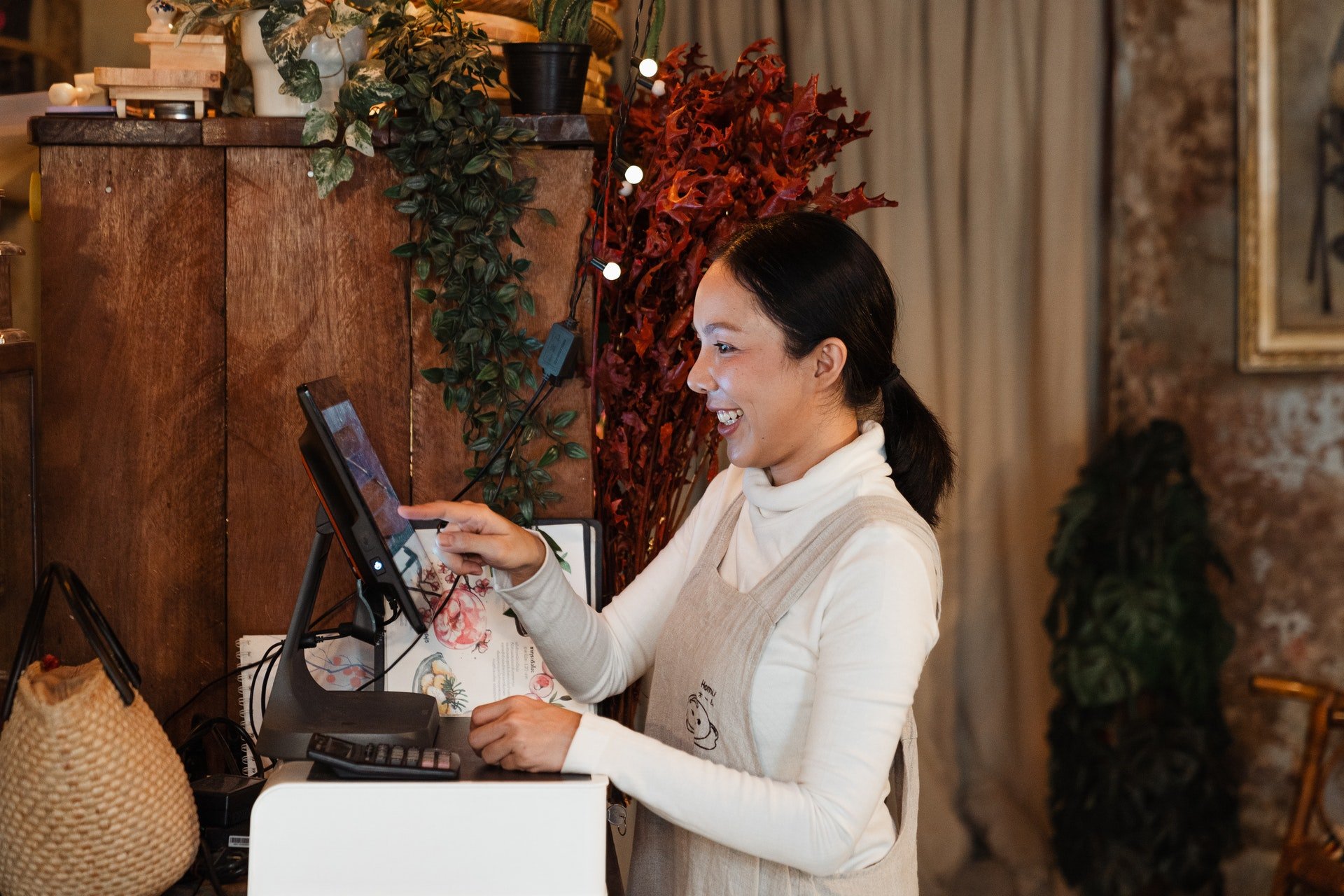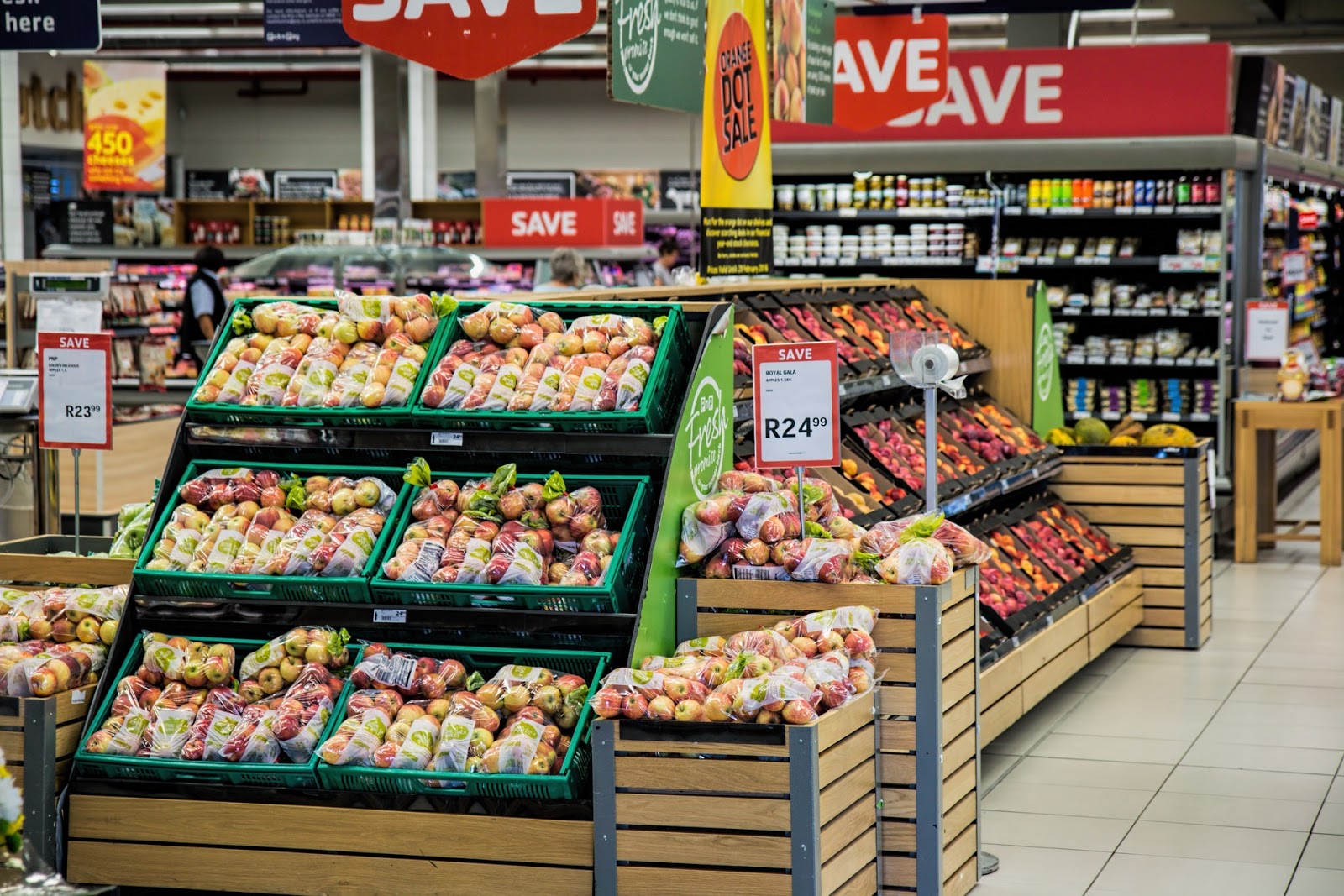Visual Merchandising: The Complete Guide For Modern Retail
Visual merchandising techniques seem straightforward, but you must find the precise combination that matches your brand and shoppers to drive revenue.
 Offering products to shoppers from your retail storefront is easy — doing so in a way that attracts and sustains engagement is hard. How can you maintain interest while competing not just with local businesses, but e-commerce brands halfway around the world? Thankfully, visual merchandising strategies can still make all the difference to retailers who put careful thought into every promotional display.
Offering products to shoppers from your retail storefront is easy — doing so in a way that attracts and sustains engagement is hard. How can you maintain interest while competing not just with local businesses, but e-commerce brands halfway around the world? Thankfully, visual merchandising strategies can still make all the difference to retailers who put careful thought into every promotional display.
This article offers a complete guide to modern visual merchandising, from color choice to storefront layout. It will also link to Resonai guides with additional best practices and advanced guidelines.
Jump to a section
E-commerce and in-app storefronts
The best practices of visual merchandising
Make effective use of light and color
Communicate details with signs
Store layout as visual merchandising
How to visualize your visual merchandising
Visual merchandising 101
Visual merchandising is the strategy of displaying products and services in an optimal manner, engaging potential customers and encouraging them to complete a purchase. For retailers, the goal is to present items in such a way that shoppers will understand their appeal in a single glance. Whatever the channel, visual merchandising increases the likelihood of attracting new customers, driving additional sales, and distinguishing your business from the competition.
Visual merchandising is a common practice in brick-and-mortar retail, but it can take place anywhere. Even direct-to-consumer brands can apply these techniques to e-commerce websites, in-app storefronts, or digital marketing campaigns. Here are a few types of visual merchandising that shoppers will be familiar with:
 Display windows
Display windows
Display windows catch the attention of potential customers at the street level to draw them into the store. They often help retailers highlight new stock and promotions while communicating the kinds of products shoppers can expect upon entering.
Interior displays
Interior displays are smaller, in-store presentations that showcase specific products or shopper needs. They can take many forms, from glass cases containing jewelry to mannequins displaying clothing items.
Point-of-purchase displays
Point-of-purchase displays present impulse offers to customers as they approach the checkout counter. For example, supermarkets have specialized shelving for magazines, candy, or soda. Some retailers also feature a “deal of the day” display that a cashier can retrieve upon request.
Seasonal displays
Seasonal products often require specialized promotions and signage. Seasonal displays meet these needs by showcasing promotions and products that shoppers need within a specific timeframe. Some common examples include summer swimwear, back-to-school promotions, or elaborate Christmas decorations.
Category displays
Many retailers arrange products by category in ways that highlight distinct features. In a grocery store, openly displaying fruit and vegetables emphasizes their freshness compared to other packaged goods.
Interactive displays
Many displays can engage shopper attention directly. In-store demonstrations and free samples accomplish this by encouraging customers to interact with them in passing.
In the 2020s, the cutting edge of visual merchandising uses technology to enhance the shopping experience. For example, retailers can use display screens that give directions or showcase promotional items. Many others leverage AR apps so that shoppers can visualize what a product looks like in their immediate surroundings.
E-commerce and in-app storefronts
Many of your customers may not enter brick-and-mortar stores at all, but visual merchandising still applies to online shopping. E-commerce product listings typically include screenshots of products, link to similar items, or notify customers about promotional coupons. Retailers cannot afford to overlook visual merchandising techniques that will make their shopping apps and websites more appealing to visitors.
Take a look at Resonai’s “What is Visual Merchandising?” for more introductory strategies.
Back to topThe best practices of visual merchandising
 Make effective use of light and color
Make effective use of light and color
Given the visual nature of visual merchandising, it’s no surprise that light and color are significant ingredients to draw from. According to one retailer, simply updating the lighting fixtures increased their sales by 12%. Color, on the other hand, is effective at communicating subtle details. Do you want your promotion to evoke passion? Red will help. Want to emphasize sustainability? Go with green. Looking to calm things down a notch? Use blue.
That all being said, sometimes a lack of light or color can have a surprising impact. Spotlights can help customers focus on certain products. Meanwhile, framing products with specific colors can help contextual details pop out. Always experiment to find the best approach for your brand and product.
Communicate details with signs
Color is great for creating a mood, but it can’t present shoppers with facts. Signage is immensely helpful when communicating specific details that might help shoppers choose between different products. The key is placing signs in ways that supplement the product without disrupting the overall presentation. The following are some excellent examples:
- Banners: Hanging banners is an excellent technique for grouping related products together. Consider using them to promote seasonal sales or direct attention to each in-store category.
- Stickers: With a well-placed sticker, you can communicate item specifics that aren’t featured on the packaging. Discounts and two-for-one deals are common, but don’t feel restricted to them. For example, bookstores also use stickers to promote staff favorites.
- Digital screens: As discussed above, technology can add a layer of interactivity and practicality to visual merchandising. Digital signs can be beneficial navigation tools or a way to look up frequently asked questions.
Always avoid clutter
Making effective use of floor space is a vital technique — there’s a big difference between subtly communicating that items are in stock and packing a shelf until it’s overflowing! Unless you’re a warehouse-style retailer like Costco, give your visual merchandising displays a little extra room to breathe. Retailers can use the space around a product display for signs instead of additional items.
Outside of visual aesthetics, minimal displays have other benefits. In the wake of COVID-19, many retailers are reducing shelf space and cutting back on the number of display areas. By making the best use of limited space, it’s easier to implement social distancing practices. To make up the difference, consider digital signs or AR technology that present all items from a local screen.
For advanced visual merchandising techniques, read “4 Visual Merchandising Strategies for 2021.”
Back to topStore layout as visual merchandising
While product displays are an essential part of visual merchandising, you don’t want them to clash with the rest of your store. Taking a step back to consider overall floor layout is essential. Along with ensuring you have enough space for displays, it also aligns the entire in-store experience with your brand.
While there is no one correct way to handle store layout, you’ll want to be mindful of shopper expectations for your industry. Here are some common examples:
Grid
Perhaps the most recognizable store layout is the grid, where products fit into densely-packed aisles. This technique is common in supermarkets, grocery stores, pharmacies, and many more. Grids benefit retail locations that need to maximize merchandise on display while supporting optimal foot traffic.
Herringbone
While grids are useful in large retail stores, they tend to feel overcrowded in smaller locations. The herringbone grid variant opens up the floor with a central pathway to the checkout that branches into grids on each size. It even creates opportunities for interior displays at aisle entrances, although they can limit the visibility of products within each aisle.
Loop
Loops guide customers along a fixed path to see all products and categories before reaching the checkout counters. This layout maximizes product visibility and streamlines customer traffic but can disrupt a casual browsing experience. Loops are often found in museums and gift shops, although some retailers like IKEA were able to implement them successfully.
Free-flow
Free-flow layouts arrange products and displays in any pattern that leaves room for customers to browse comfortably. This style avoids structured aisles to focus on category clusters that remain visible from the store entrance. While free-form layouts are the most flexible approach, they do require an overarching structure to be successful. These patterns are often dictated by human behavior — for example, since 90% of shoppers turn right upon entering a store, retailers can place high-value promotions within this area.
To learn more about store layouts and design, take a look at “Retail Store Layout: Designing for Maximum Revenue.”
Back to topHow to level up your visual merchandising
Each element of a visual merchandising strategy may appear straightforward, but combining them in ways that appeal to shoppers is a challenge. One solution is to adopt AR tools that help retailers visualize, analyze, and experiment with different layouts. And that’s where Vera can help.
Vera is Resonai’s augmented reality platform for enterprises. Using Vera, retailers can create 1:1 digital representations of their stores, right down to individual products on the shelf. From there, it’s possible to run scenarios, analyze traffic, and make audiovisual adjustments to lighting or color on the fly. A Vera-powered supplemental app will also let retailers review data and real-time feedback when making updates to layouts.
With Resonai, it’s easier than ever to generate visual merchandising strategies that will thrill and engage your shoppers. If you want to know more about Vera, get in touch to set up a free demonstration.
Subscribe to Our Newsletter!
Read More
5 Clothing Store Layout Must-Haves
With more consumers turning to ecommerce, it’s increasingly important to highlight the unique value...
5 Free Retail Store Layout Design Tools
Designing the optimal retail store layout is an art as much as it is a science. You’re managing the...
Store Planning: The Ultimate Guide for Retail
Store planning is both an art and a science. Elements of behavioral psychology, geometry, and...

